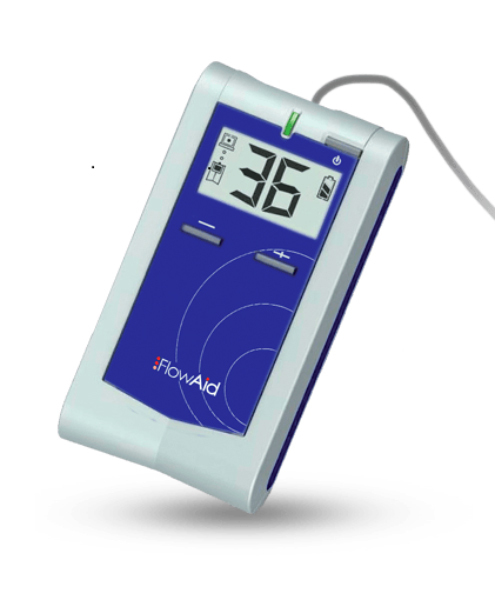
Having received CE mark approval in July and Health Canada approval in August of last year, FlowAid Medical Technologies has now received US Food and Drug Administration (FDA) clearance for its FA100 SCCD (Sequential Continuous Contraction Device) for the following indications: increase of local blood circulation, immediate post-surgical stimulation of calf muscles to prevent venous thrombosis, prevention or retardation of disuse atrophy and oedema reduction. FlowAid says that the FA100 SCCD is the first device of its kind cleared by the FDA for the indication of oedema reduction.
The FA100 SCCD is a small, lightweight, portable and handheld four-channel electrical muscle stimulator that is easy to use and provides comfortable, low-frequency stimulation in a proprietary sequential pattern. The FA100 SCCD operates without any external pressure to the leg, allows complete mobility and does not interfere with daily activities.
The primary mechanism of the FA100 is to activate the calf muscle pump using a sequential pattern of electrical stimulation that causes a peristaltic wave of muscle contractions running distal to proximal along the lower leg. The muscle contractions periodically compress the deep veins of the lower leg, forcing the partial emptying of the deep veins and resulting in increased arterial flow.
Clinical trials and evaluations of the FA100 SCCD have been ongoing. Guido Giacalone, director of the Lymfoedeem Centrum in Belgium, will be doing a large study on the effects of the device on lymphoedema and Raj Mani, consultant in Clinical Sciences at Southampton University Hospital NHS Trust, UK, and visiting professor at the Shanghai Jiao Tong University School of Medicine, China, will be supervising a worldwide study on effects of the device on diabetic peripheral neuropathy.
FlowAid chief executive officer Jacob Brezel says, “We are very excited to be able to make the FA100 SCCD available to patients in the USA who will benefit from low-frequency, comfortable stimulation of the calf muscles to increase blood flow. We plan to submit additional FDA applications to expand our claims for other disease-specific indications, including the treatment of diabetic peripheral neuropathy and lymphoedema.”









